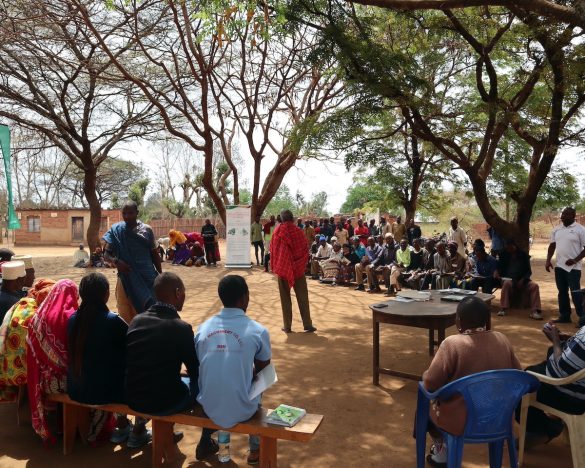Taking agricultural technologies to scale: The Africa RISING-NAFAKA partnership in Tanzania
Warning: Trying to access array offset on value of type bool in /home/africarising/public_html/wp-content/plugins/slideshare/slideshare.php on line 162
Warning: Trying to access array offset on value of type bool in /home/africarising/public_html/wp-content/plugins/slideshare/slideshare.php on line 165
Sustainable intensification which focuses on increasing agricultural productivity while meeting high standards for sustainability in environmental, economic and social terms is one of the critical approaches for addressing food insecurity and poverty in sub-Saharan Africa. Since 2012, the Africa Research in Sustainable Intensification for the Next Generation (Africa RISING) program has developed, validated and refined agricultural technologies that can enhance productivity for specific agro-ecologies in eastern, southern and western Africa.
In 2014, the program embarked on a collaboration with the United States Agency for International Development (USAID)-led Tanzania Staples Value Chains (NAFAKA) project to enhance scaling of the research outputs through the introduction of improved crop varieties, good agricultural practices, natural resource management, reduction of food wastage and spoilage and community capacity building in the country. The target is to jointly reach 47,000 households and have about 6 0,000 hectares under improved technologies by 2017.
Approach adopted under the partnership
The partnership uses a mother-baby-grand baby approach to facilitate technology promotion and learning by farmers and extension personnel. Each trainee in the previous year is expected to train others in subsequent years. Secondly, to enhance further scaling, partnerships with local institutions (extension, agro-input supply, markets and processing) are crucial. The crucial guiding principles of the project are:
- jointly planning and identifying new partners as we progress;
- capacity building for, and deepening collaboration with, local institutions;
- using geographic information system (GIS) for technology targeting; and
- having a functional communication and coordination mechanism.
Results
Now moving into its third year of operation, the project has succeeded in putting 13,000 hectares of land under improved technologies and 10,400 households have adopted the technologies within the project target zones.
CGSpace record: http://hdl.handle.net/10568/78193
Read a related story on Africa RISING collaboration with NAFAKA in Tanzania.




